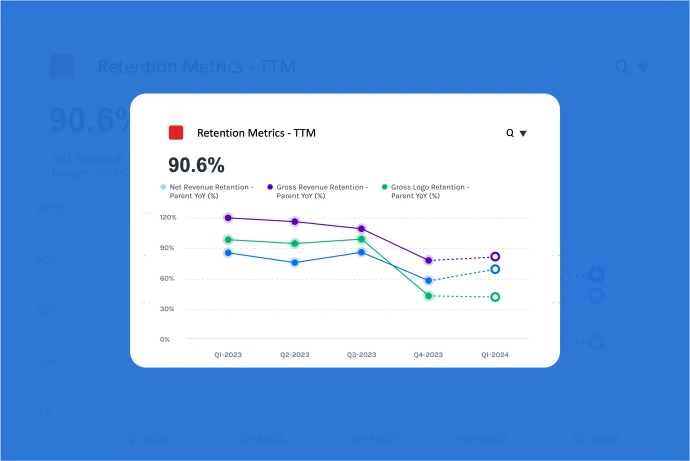What is Gross Logo Retention?
Gross Logo Retention Rate is a metric used to measure the ability of a company to retain its customers over a specific period. It focuses on the overall percentage of customers (or “logos”) that a SaaS company is able to retain, without considering the revenue generated by those customers. The metric helps assess the company’s ability to keep its customer base intact and highlights the effectiveness of its customer retention strategies.
Why is it important to monitor?
The Gross Logo Retention Rate provides insights into customer satisfaction, product stickiness, and the overall health of the customer base. High retention rates indicate that customers are finding value in the product or service and are likely to continue their subscriptions, contributing to the company’s long-term success. Conversely, a low retention rate may signal issues with the product, customer service, or overall customer experience, highlighting areas that need improvement.
How do you calculate Gross Logo Retention?
Gross Logo Retention can be calculated at both the Parent or account level, over multiple periods. The most used frequency is Trailing Twelve Months (TTM).
Gross Logo Retention Formula
(Starting # Customers – # Customers who Churned) / Starting # of Customers
How do you improve Gross Logo Retention?
Improving Gross Logo Retention involves implementing strategies and initiatives aimed at enhancing the overall customer experience, increasing product stickiness, and strengthening the value proposition for the customers. Here are some effective ways to improve Gross Logo Retention:
- Enhance Customer Onboarding: Implement a smooth and fast onboarding process to help customers understand and effectively use the product. Provide training, resources, and support during the initial stages of their journey.
- Offer Proactive Customer Support: Establish proactive customer support channels to address customer concerns and queries promptly. Provide multiple support options, including live chat, phone support, and a knowledge base, to cater to different customer preferences.
- Provide Regular Updates and Enhancements: Continuously update and improve your product based on customer feedback and market trends. Regularly introduce new features, functionalities, and enhancements that add value to the customer experience.
- Focus on Customer Success: Develop a robust customer success program to ensure that customers achieve their desired outcomes and goals with the product. Provide personalized support, proactive guidance, and resources to help customers derive maximum value from the product.
- Implement Personalization: Customize the customer experience based on individual preferences, behaviors, and usage patterns. Utilize data analytics and customer insights to deliver personalized recommendations, content, and communications.
- Offer Incentives and Loyalty Programs: Implement loyalty programs, referral programs, and incentives to encourage customer loyalty and retention. Reward long-term customers and advocates to foster a sense of appreciation and recognition.
- Monitor and Address Churn Signals: Continuously monitor customer behavior and usage patterns to identify early churn signals. Proactively address customer concerns, dissatisfaction, or potential issues to prevent churn and retain customers.
- Conduct Customer Feedback, Satisfaction, Net Promoter Score Surveys: Regularly gather customer feedback through surveys and assessments to understand their evolving needs, pain points, and satisfaction levels. Use this information to make data-driven improvements and adjustments to the product and customer experience.





